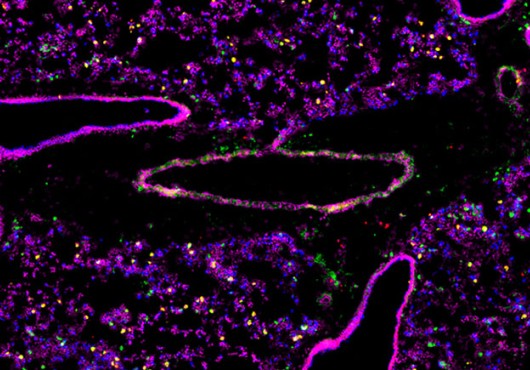Konstantina Stankovic. Image: John Kent

Researchers from the Harvard-MIT Program in Speech and Hearing Bioscience and Technology and Massachusetts Eye and Ear have demonstrated that salicylates, a class of nonsteroidal inflammatory drugs (NSAIDs), reduced the proliferation and viability of cultured vestibular schwannoma cells that cause a sometimes lethal intracranial tumor that typically causes hearing loss and tinnitus.
The research is described online in Translational Research.
Get more Harvard Medical School news here.
“These preclinical data based on cultured primary vestibular schwannoma cells, combined with our previously published work on aspirin intake correlating with halted growth of vestibular schwannomas (also known as acoustic neuroma), motivate a future prospective clinical trial,” said Konstantina Stankovic, HMS assistant professor of otology and laryngology and principal investigator at the Eaton-Peabody Laboratories at Mass Eye and Ear.
Vestibular schwannomas are the most common tumors of the cerebellopontine angle and the fourth most common intracranial tumors. Although vestibular schwannomas are histologically nonmalignant, they can lead to substantial morbidity, including sensorineural hearing loss, vestibular dysfunction and facial nerve paralysis. Large vestibular schwannomas can cause additional paralysis of other cranial nerves, brainstem compression and death, the authors write.
Currently, patients with symptomatic or growing vestibular schwannomas can undergo surgical resection or radiotherapy. Both of these procedures can result in serious complications. Effective drug therapies that can limit growth would greatly advance health care for these patients.
Salicylates are attractive therapeutics because they are clinically relevant, well tolerated and commonly used against pathologies such as pain and arthritis. Furthermore, in some cases, chronic intake of salicylates has led to a significant reduction in the incidence and burden of various tumors, such as colorectal cancer.
“In our study, we focused on salicylates because a mechanism of their action is inhibition of cyclooxygenase 2 (COX-2), and a previous study reported that immunohistochemical expression of COX-2 correlated with vestibular schwannoma growth rates. We assessed the efficacy of three different salicylates against vestibular schwannoma: aspirin, sodium salicylate (NaSal) and 5-aminosalicylic acid (5-ASA),” Stankovic said.
The team found COX-2 to be aberrantly expressed in human vestibular schwannomas and primary human vestibular schwannoma cells in comparison to control human nerve specimens and primary Schwann cells (SCs), respectively. Further, levels of prostaglandin E2, the downstream enzymatic product of COX-2, correlated with the primary vestibular schwannoma culture proliferation rate. Changes in proliferation, cell death and cell viability were analyzed in primary vestibular schwannoma cultures treated with aspirin, NaSal or 5-ASA. These drugs decreased proliferation and viability of vestibular schwannoma cells without increasing cell death or affecting healthy schwannoma cells. The cytostatic effect of aspirin in vitro was consistent with Stankovic’s previous clinical finding that vestibular schwannoma patients taking aspirin demonstrate reduced tumor growth.
”Overall, this work suggests that COX-2 is a key modulator in vestibular schwannoma cell proliferation and survival and highlights salicylates as promising pharmacotherapies against vestibular schwannoma,” the authors concluded.
This study was supported by the National Institute on Deafness and Other Communication Disorders grants T32 DC00038 and K08DC010419, the Bertarelli Foundation and Department of Defense grant W81XWH-14-1-0091.
Adapted from a Mass Eye and Ear news release.


